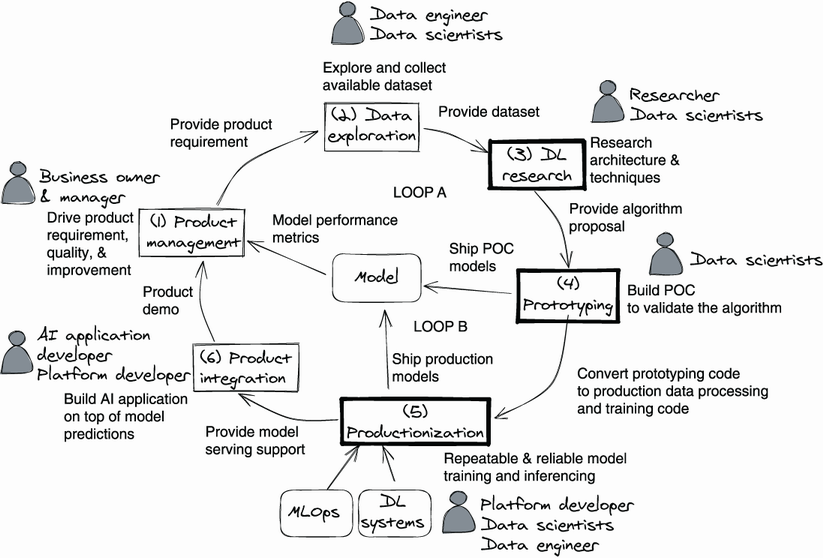For the concluding chapter of the book, we think it makes sense to return to a high-level view and connect all the dots from previous chapters. We have now discussed in detail each service in a deep learning system. In this chapter, we will talk about how the services work together to support the deep learning product development cycle we introduced in chapter 1. That cycle, if you remember, brings the efforts of research and data science all the way through productionization to the end products that customers use.
As a reminder, figure 10.1, borrowed from chapter 1, shows the product development cycle. Our focus in this chapter will be on three phases that occur toward the end of the process: deep learning research, prototyping, and productionization. This focus means we’ll ignore the cycles of experimentation, testing, training, and exploration and look at how to take a final product from the research phase to the end product, making it ready to be released to the public.
